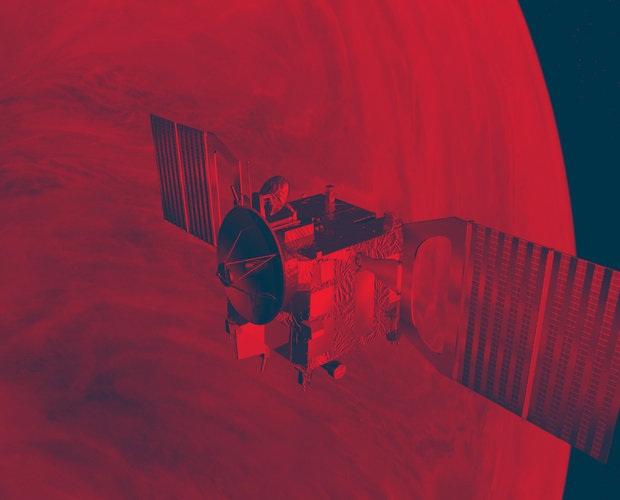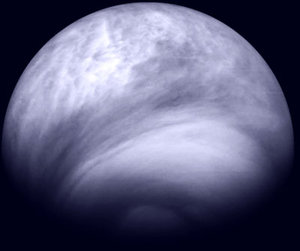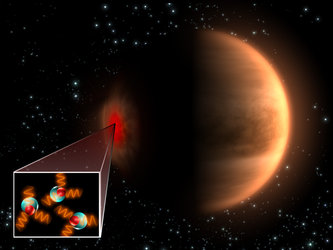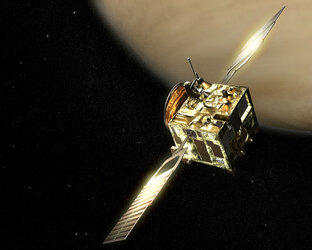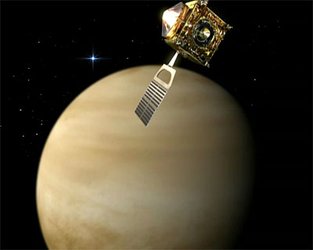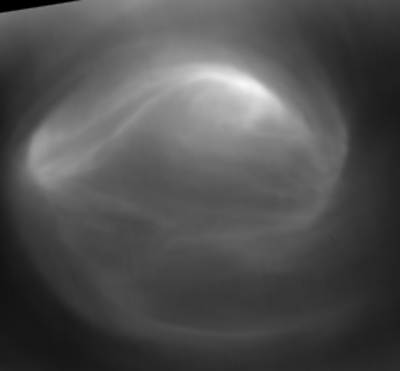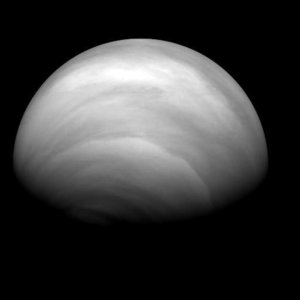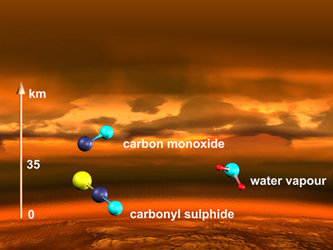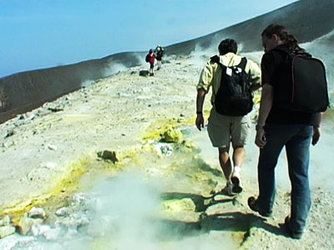Closing in on Venus
Starting this week, spacecraft controllers have been executing a series of manoeuvres to gradually bring Venus Express closer to its host planet. In its modified orbit, the spacecraft will be able to observe unexplored regions and investigate phenomena that were not within its reach before.
The operational manoeuvres to bring the spacecraft closer will be executed through the month of July, settling it into its new orbit by 4 August.
Until now, Venus Express has occupied a highly eccentric polar orbit: at its closest point (pericentre), the spacecraft is between 250 km and 400 km from the planet, and at its farthest (apocentre), it is about 66 000 km away. The pericentre is located at 84° north.
This eccentric orbit was designed to facilitate observation of the southern hemisphere for extended periods, and of the northern hemisphere and the northern polar region at closer distances.
The altitude of the pericentre will now be lowered to between 185 and 300 km. This modification will enable the following science advantages:
Study of the magnetic field in the northern polar region
Study of the plasma environment deeper in the ionosphere
To indirectly deduce the density of the planet’s atmosphere by measuring the force, or drag, exerted by the planet’s atmosphere on the body of the spacecraft as it moves closer to the planet
The lowering of the Venus Express orbit is the first step in a more ambitious strategy, yet to be confirmed in its entirety. The intention is to lower the spacecraft's orbit further into the atmosphere, such that the drag on the spacecraft's body can be measured by the on-board accelerometers.
As the next step, Venus Express may test aerobraking, a technique where a spacecraft uses the force exerted by the planet’s atmosphere to decelerate and so significantly change its orbit in a controlled manner.
For more information:
Håkan Svedhem, ESA Venus Express Project Scientist
Email: Håkan.Svedhem @ esa.int
Octavio Camino, ESA Venus Express Spacecraft Operations Manager
Email: Octavio.Camino @ esa.int



